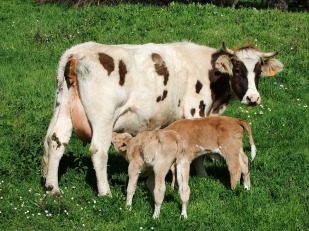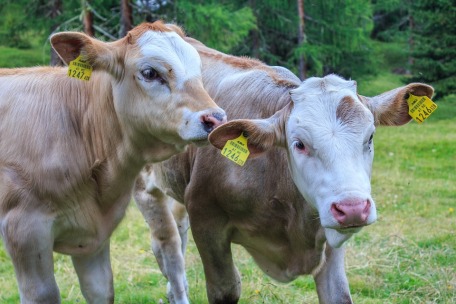The UK agricultural industry contributes £10.7 million to the economy each year, uses 71% of the land, and employs around 400,00 people (1). It is an industry that must keep up with the ever-growing human population, while ensuring high animal welfare standards. When looking at economical growth and percentage yields, it can be easy to forget the welfare of farm animals. Of course, if we reduced the amount of space per chicken, we can fit more birds in, meaning more eggs. But in reality, this will lead to cramped living conditions; increased disease transmission and reduced egg yield due to the stressful conditions. Therefore, it is vital we keep animal welfare at the front of our minds when implementing new strategies; not only for their benefit, but also to ensure our agricultural practises are efficient and productive.
Beef cattle are weaned (separated from their mothers) between 6 and 8 weeks old, although there are other factors such as body condition and weight that should be considered in the decision process. In traditional weaning methods, calves are usually separated from their mothers instantaneously or with a short time of preconditioning to the calf’s new home. Not only does this cause changes in calf behaviour, it can also lead to an increase in illness.

Historically, and in their wild cousins, calves would stay with their mothers until their milk supply stopped, at which point they would slowly start to separate. However, in traditional weaning, calves are not given the chance to gradually become independent from their mothers. Instead, they are suddenly faced with no milk and no mother, a situation that is unlikely to happen in the wild. This can cause extreme stress in the calf, expressed through increased vocal activity, pacing and reducing feeding. Increased stress levels can also cause immunosuppression, leading to a variety of illnesses such as respiratory diseases.
New research into weaning practises found that calf stress levels could be significantly reduced through a 2-stage weaning process. In 2-stage weaning, the loss of the milk and the loss of the mother are 2 separate events, meaning the calves have time to adjust to their independence.
In two stage weaning, calves can be fitted with a non-invasive nose flap that prevents them from suckling. This allows farmers to replicate what would naturally happen, the milk stopping first, and then the removal of the mother. Studies have found this process reduces behaviours indicating stress such as pacing and vocalisations compared with traditional weaning methods (2).
Another method of 2-stage weaning uses a fence line to reduce the physical contact between mother and calf. By providing limited tactile interaction but allowing full olfactory, auditory and visual information to be received, the weight loss suffered during traditional weaning is lessened and behavioural indications of stress are reduced. By allowing this interval between cessation of the milk and removal of the mother, farmers are following a pattern that mirrors the cow’s natural behaviour, thereby reducing stress which in turn decreases the likelihood of diseases.

Through further study and increased awareness, two-stage weaning could become more commonplace in the agricultural industry, and could be applied to other farmed animals such as sheep. It is important that in our modern and scientific world, we do not stick to ‘traditional’ methods because they ‘worked in the past’. With new research, we can improve the lives of farm animals by considering their behavioural needs and implementing new management strategies.
For more information on two-stage weaning, please visit the QuietWean website.
References
- https://www.gov.uk/government/uploads/system/uploads/attachment_data/file/515048/food-farming-stats-release-07apr16.pdf
- Haley, D.B., Bailey, D.W., Stookey, J.M. (2005) “The effects of weaning beef calves in two stages on their behaviour and growth rate.” Journal of Animal Science, 83(9) p. 2205-2214